Showing Spotlights 625 - 632 of 2879 in category All (newest first):
 As a coating, hydrogels bring many advantages to regular solid surfaces, uniting the superior properties of the substrate with the superior properties of the hydrogel. However, making hydrogel coatings outside a laboratory environment can be difficult. Inspired by the economics of paint manufacturing, we have developed a technique for hydrogel coating preparation that breaks the process up into several steps. This step-wise synthetic pattern, decoupling polymerization from crosslinking and interlinking, divides the labor between the hydrogel coating maker and its user.
As a coating, hydrogels bring many advantages to regular solid surfaces, uniting the superior properties of the substrate with the superior properties of the hydrogel. However, making hydrogel coatings outside a laboratory environment can be difficult. Inspired by the economics of paint manufacturing, we have developed a technique for hydrogel coating preparation that breaks the process up into several steps. This step-wise synthetic pattern, decoupling polymerization from crosslinking and interlinking, divides the labor between the hydrogel coating maker and its user.
Oct 8th, 2019
 Ocean wave energy is an abundant resource of clean energy. However, having been explored for decades, there is still lacking efficient and economical technologies to convert water wave energy into electricity for large-scale applications Researchers have developed a new type of wave energy harvester, hierarchically structured triboelectric nanogenerator (HS-TENG), based on the triboelectric effect, targeting to harvest the huge blue energy for large-scale deployments.
Ocean wave energy is an abundant resource of clean energy. However, having been explored for decades, there is still lacking efficient and economical technologies to convert water wave energy into electricity for large-scale applications Researchers have developed a new type of wave energy harvester, hierarchically structured triboelectric nanogenerator (HS-TENG), based on the triboelectric effect, targeting to harvest the huge blue energy for large-scale deployments.
Oct 7th, 2019
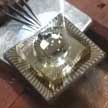 Researchers have developed a method for direct, point-of-use detection of mycotoxins in food. The method is based on the modification of electrolyte operated graphene filed effect transistors that have been specifically functionalized with aptamers by covalent binding. Demonstrating the performance of this method on Ochratoxin A, these sensors show a response time of within 5 minutes with a sensitivity down to 4 pg/ml - that is about three orders of magnitude less than accepted tolerance levels of Ochratoxin A.
Researchers have developed a method for direct, point-of-use detection of mycotoxins in food. The method is based on the modification of electrolyte operated graphene filed effect transistors that have been specifically functionalized with aptamers by covalent binding. Demonstrating the performance of this method on Ochratoxin A, these sensors show a response time of within 5 minutes with a sensitivity down to 4 pg/ml - that is about three orders of magnitude less than accepted tolerance levels of Ochratoxin A.
Oct 4th, 2019
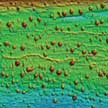 A novel and very promising design strategy for stretchable electronics is based on liquid metals; specifically the use of the oxide shell of liquid gallium alloys to fabricate polymerized liquid metal networks (Poly-LMNs). The novel attribute of these Poly-LMNs is that they increase in conductivity as they are elongated, resulting in the measured resistance across the conductor remaining nearly unchanged as they are stretched to 700% their original length. The implication of this effect is that a circuit can now be designed with a stretchable Poly-LMN wire that won?t change its resistance when stretched.
A novel and very promising design strategy for stretchable electronics is based on liquid metals; specifically the use of the oxide shell of liquid gallium alloys to fabricate polymerized liquid metal networks (Poly-LMNs). The novel attribute of these Poly-LMNs is that they increase in conductivity as they are elongated, resulting in the measured resistance across the conductor remaining nearly unchanged as they are stretched to 700% their original length. The implication of this effect is that a circuit can now be designed with a stretchable Poly-LMN wire that won?t change its resistance when stretched.
Oct 3rd, 2019
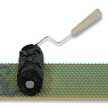 Researchers demonstrate that the amorphous carbon contaminants on CVD-produced graphene, which could greatly degrade its properties, can be removed by an activated carbon-coated lint roller, relying on the strong interactions between the amorphous carbon and activated carbon. Large-area graphene surfaces treated with this lint roller exhibit a high cleanliness of 99% with a low degree of polymer residue after transfer onto a functional substrate. This superclean graphene has extremely low contact resistance and ultrahigh carrier mobility.
Researchers demonstrate that the amorphous carbon contaminants on CVD-produced graphene, which could greatly degrade its properties, can be removed by an activated carbon-coated lint roller, relying on the strong interactions between the amorphous carbon and activated carbon. Large-area graphene surfaces treated with this lint roller exhibit a high cleanliness of 99% with a low degree of polymer residue after transfer onto a functional substrate. This superclean graphene has extremely low contact resistance and ultrahigh carrier mobility.
Sep 26th, 2019
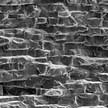 To make epoxy-graphene nanocomposites, the graphene nanosheets are commonly mixed homogeneously with the epoxy matrix. However, one of the problems that bedevils these nanocomposites is the issue of agglomeration of the nanofillers. Researchers now report that they have sucessfully tackled this dispersion problem by constructing a continuous graphene-based scaffold. The results show that the team's novel strategy boosts the fracture toughness to about 3.6 times that of pure epoxy.
To make epoxy-graphene nanocomposites, the graphene nanosheets are commonly mixed homogeneously with the epoxy matrix. However, one of the problems that bedevils these nanocomposites is the issue of agglomeration of the nanofillers. Researchers now report that they have sucessfully tackled this dispersion problem by constructing a continuous graphene-based scaffold. The results show that the team's novel strategy boosts the fracture toughness to about 3.6 times that of pure epoxy.
Sep 25th, 2019
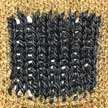 MXenes' inherently good conductivity and excellent volumetric capacitance makes them a very attractive material for fabricating textile-based, wearable electronics (e-textiles) that can be worn like everyday garments. This requires the fabrication of conductive yarns that are robust enough to be suitable for the wear and tear experienced by everyday textiles. A new study demonstrates highly conductive MXene-based yarns that can be washed and knitted just like conventional yarns - offering a potential platform technology for e-textile-based devices with tunable performance.
MXenes' inherently good conductivity and excellent volumetric capacitance makes them a very attractive material for fabricating textile-based, wearable electronics (e-textiles) that can be worn like everyday garments. This requires the fabrication of conductive yarns that are robust enough to be suitable for the wear and tear experienced by everyday textiles. A new study demonstrates highly conductive MXene-based yarns that can be washed and knitted just like conventional yarns - offering a potential platform technology for e-textile-based devices with tunable performance.
Sep 11th, 2019
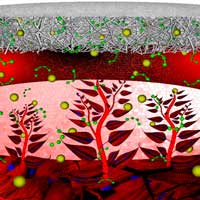 Among the various therapeutic advances, regenerative medicine and nanotechnologies have demonstrated a considerable capacity to salvage or regenerate damaged heart tissue in animal models. The superior characteristics of nanobiomaterials have shown great promise in developing engineered cardiovascular constructs for a variety of tissue engineering applications. But in order to develop efficient nanotechnology-based regenerative medicine platforms in humans, clinicians and engineers must achieve a greater common understanding of the problems, challenges, and opportunities in both fields.
Among the various therapeutic advances, regenerative medicine and nanotechnologies have demonstrated a considerable capacity to salvage or regenerate damaged heart tissue in animal models. The superior characteristics of nanobiomaterials have shown great promise in developing engineered cardiovascular constructs for a variety of tissue engineering applications. But in order to develop efficient nanotechnology-based regenerative medicine platforms in humans, clinicians and engineers must achieve a greater common understanding of the problems, challenges, and opportunities in both fields.
Sep 10th, 2019
 As a coating, hydrogels bring many advantages to regular solid surfaces, uniting the superior properties of the substrate with the superior properties of the hydrogel. However, making hydrogel coatings outside a laboratory environment can be difficult. Inspired by the economics of paint manufacturing, we have developed a technique for hydrogel coating preparation that breaks the process up into several steps. This step-wise synthetic pattern, decoupling polymerization from crosslinking and interlinking, divides the labor between the hydrogel coating maker and its user.
As a coating, hydrogels bring many advantages to regular solid surfaces, uniting the superior properties of the substrate with the superior properties of the hydrogel. However, making hydrogel coatings outside a laboratory environment can be difficult. Inspired by the economics of paint manufacturing, we have developed a technique for hydrogel coating preparation that breaks the process up into several steps. This step-wise synthetic pattern, decoupling polymerization from crosslinking and interlinking, divides the labor between the hydrogel coating maker and its user.
 Subscribe to our Nanotechnology Spotlight feed
Subscribe to our Nanotechnology Spotlight feed





